Description of the Megaton cabbage variety, cultivation features
Cabbage Megaton F1 from the famous Dutch company Bejo Zaden has been familiar to our summer residents since 1996. At the end of the last century, the fruitful hybrid was tested in Russian fields, and was entered into the State Register. Reviews indicate the popularity of the hybrid among summer residents. The hybrid is successfully used by farmers.
Basic information about the characteristics of Megaton cabbage
We begin the description of the variety with a description of the chemical composition of the head. The composition determines the nutritional value of the variety and the direction of use. The table shows the percentage of substances useful for the human body in 100 grams of Megaton cabbage leaves.
| Name | amount |
| Dry matter | 8,7 % |
| Sugar substances | 3,8 % ~ 5 % |
| Vitamin C | 39.3 ~ 43.6 mg |
| Protein | 0,6 ~ 3 % |
A large percentage of sugars makes cabbage suitable for pickling. This hybrid can be safely grown for autumn fermentation. White sauerkraut has excellent taste and is stored for a long time.
You can understand if you analyze the reviews of summer residents about cabbage that Megaton heads of cabbage are not suitable for fresh use (cooking salads). The leaves are very dense; when preparing a salad, you will need to mash them well to achieve the desired juiciness and tenderness.
Yield
Megaton is a fruitful vegetable crop. The hybrid is grown by large and small agricultural enterprises, therefore, data on the yield of cabbage appear not per square meter, but per hectare. The maximum yield was recorded - 934 c / ha. Average indicators can be lower, from 586 kg / ha.
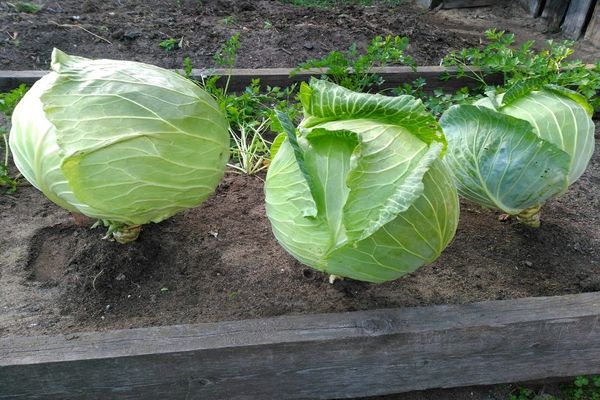
In warm climates, Megaton F1 cabbage has a lower yield characteristic. The variety shows the best results in temperate climates. The hybrid is not recommended to grow in the Volga-Vyatka region. This is recorded by the manufacturer and indicated in the data on the hybrid in the State Register.
Specifications
A hybrid of average ripening periods - 130 - 160 days from germination. The culture is grown in seedlings. Cabbage shows good frost resistance. Adult heads of cabbage do not lose marketability during short-term frosts down to -8 ° C.
The frost resistance indicator does not apply to young Megaton seedlings - it can die with a slight spring cold snap. This must be taken into account when transplanting seedlings into the ground. If there is a threat of night frosts, cabbage seedlings should be covered.
Immediately it is necessary to note an important advantage of the hybrid - a short stump (15 cm). Every housewife will appreciate the short stump: the less waste from cabbage processing, the better. The shape of the heads of cabbage is rounded, even, slightly flattened. The outer leaves are light green with a slight waxy bloom. The leaves are large, oval, slightly corrugated along the edge. The rosette is large.
The inner leaves are white, dense, juicy, collected in a tight head of cabbage. Heads of cabbage are large, average weight 3-4 kg. There is evidence that it was possible to grow heads of cabbage weighing up to 10 - 15 kg. You can get such wonderful results with good care and a comfortable summer temperature.
On the merits of a hybrid
Briefly all the valuable properties of the hybrid, its features and disadvantages are set out in the table.
| Advantages | disadvantages |
| Transportability | Short storage period (no more than 3 months) |
| Low dependence on weather conditions | Dense leaves by the head of cabbage |
| Disease and pest resistance | |
| Good raw material for fermentation for the winter |
From summer residents about Megaton cabbage
Konstantin, Voronezh:
“There was a bad cultivation experience. Summer was hot, dry, cabbage was often watered. At the exit we got two-kilogram heads of cabbage. There were no complaints about the shape and density. All the heads of cabbage were tight. They were not stored for long - they ate it quickly, so it was not possible to assess keeping quality. I will be looking for a new variety for the next season. I love big-sized heads of cabbage. "
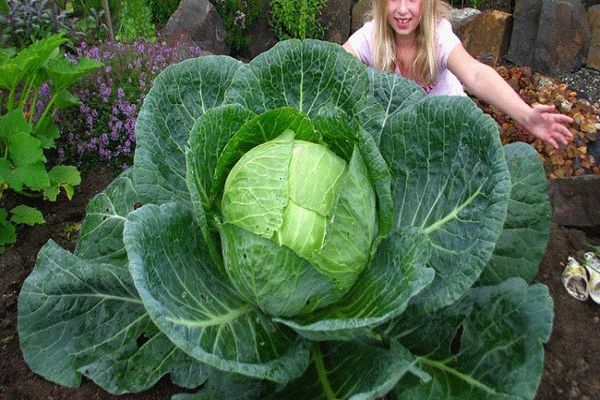
Natalia, Oryol:
“Megaton was planted and we plan to plant in the future. I like the fact that there are no aphids and caterpillars on the cabbage ridge. Somehow these pests do not like our cabbage. It is easy to grow a hybrid, because it does not need any processing, we grow it without any chemistry, if it rains regularly and it takes little time to water ”.
Agrotechnics
It is better to grow seedlings in a spring greenhouse or greenhouse. It is difficult to grow strong cabbage seedlings in an apartment. Providing the temperature necessary for normal growth (18 - 20 ° C) can be problematic. Sow seeds for seedlings in early April. Sprinkle the seeds with a 1 cm layer of humus - it is not worth it deeper, the seeds are small. In the phase of 3-4 leaves, dive cabbage seedlings. Be sure to pinch the center spine, leave, of the entire length.
Seedlings during the growth period are important:
- lighting;
- soil moisture;
- humidity and air temperature;
- feeding.
All about dressing
As an aid to a novice vegetable grower, we present a fertilization scheme. By adhering to the recommended scheme, you can guarantee a high yield of healthy heads of cabbage. Cabbage leaves will not contain nitrates harmful to humans.
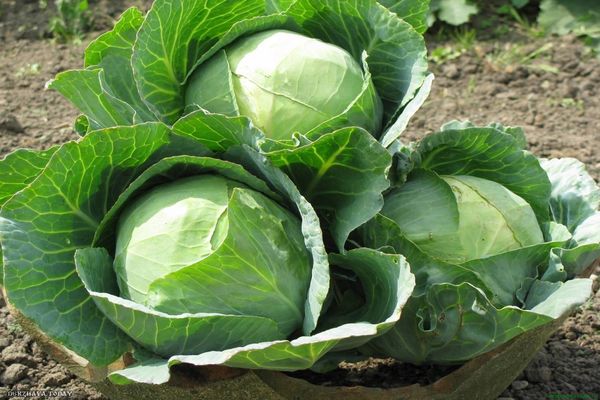
After 7 - 10 days after picking cabbage, we carry out the first feeding. In 7 days, young cabbage will have time to adapt, the roots will begin to grow, actively supplying the plant with nutrients.
Watering 55 bushes will require one liter of an aqueous solution of fertilizers. For cooking you need to take:
- potassium nitrate - 2 g;
- superphosphate - 4 g;
- ammonium nitrate - 2 g.
When 14 days have passed after the first feeding, the grown cabbage seedlings will need to be fed for the second time. For the same liter of water, take the same set of fertilizers, increasing the content of each component by 2 times.
If there is fresh manure, it is better to replace the solution of mineral fertilizers with mullein infusion. For watering cabbage prepare an aqueous solution in a ratio of 1 part of the infusion to 10 parts of water.
Two days before the transplant, the cabbage seedlings are fed for the last time. Fertilizer rate for the third top dressing:
- ammonium nitrate - 3 g;
- potash fertilizer - 8 g;
- superphosphate - 5 g.
To prepare the solution, we take 1 liter of settled water.
In the summer, it is enough to feed the cabbage 2 times. The first time the cabbage takes root after transplanting. You can understand that the vegetable has taken root by the leaves - they will grow. At this time, use 10 liters of nutrient solution for 5 cabbage roots. The first feeding is purely nitrogen - ammonium nitrate 10 g per 10 liters.
When the leaves begin to curl into the head, the cabbage must be fed a second time. Fertilizer consumption is given for 10 liters:
- urea - 4 g;
- potassium sulfate - 8 g;
- superphosphate (double) - 5 g.
Hybrid care Megaton is standard.Watering will be an important part of all summer work. From transplanting seedlings into the ground to the moment when the leaves begin to curl, water it 2-3 times a week. If the weather is rainy, less often. The main reference point is soil moisture.
Diseases and pests
When a summer resident knows which diseases and pests need to be protected from vegetable plantings, he can timely prevent diseases, purchase drugs from pests. Growing a hybrid Megaton, you should not relax. Although the hybrid is resistant to a number of diseases, it is worth insuring against black leg, powdery mildew and rhizoctonia.
So that the cabbage does not suffer from the black leg, it is necessary to add the preparation “Tiram” to the soil at a dosage of 50 g / m², the seeds must be treated with the agent “Granosan” or a solution of potassium permanganate... Powdery mildew is helped by seed dressing. In addition, heads of cabbage can be sprinkled with infusion of garlic - 100 g of crushed garlic per 10 liters to insist 12 hours. Preparations "Quadris" and "Hom" will protect plantings from Rhizoctonia. Treat the soil before planting.
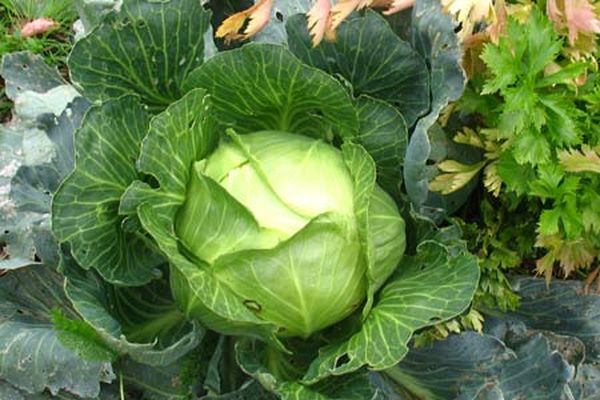
The main pests of cabbage: caterpillars, aphid colonies, cruciferous bugs, secretive proboscis. Megaton is a pest and disease resistant crop, but insects are likely to appear on cabbage leaves if the soil is infested with pest larvae.
Autumn tillage is an activity that should not be ignored. You need to dig up a bed for cabbage, treat the soil with Actellik, do not break clods. Use the same drug for pre-sowing treatment of cabbage seeds.
Megaton F1 is an excellent hybrid for areas with erratic weather conditions, short summers and early night frosts in autumn. Grow cabbage for fermentation it is not difficult, you just need to carry out pre-sowing seed treatment, proper preparation of the soil for planting and regularly take care of cabbage plantings.
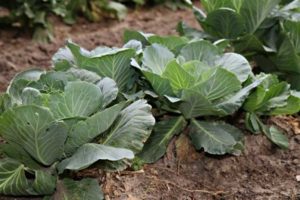
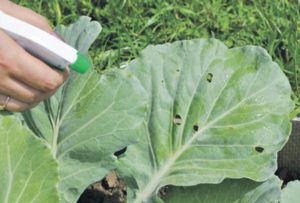

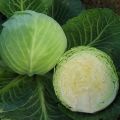



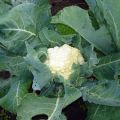
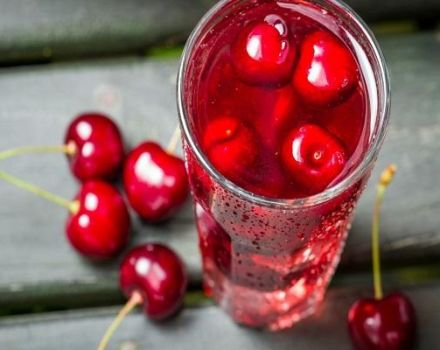

A wonderful variety of cabbage, I grow mainly only it, the yield is simply excellent and the fruits are large. When disembarking, I use the product BioGrow, it promotes rapid growth.